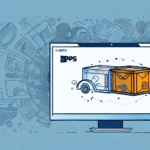Understanding the Original Bill of Lading in Supply Chain Management
A Bill of Lading (BOL) is a crucial document in supply chain management, serving as a contract between the shipper, carrier, and receiver of goods. The BOL outlines the details of the shipment, including the type and quantity of products being transported, the origin and destination of the shipment, and the terms of the agreement between the involved parties. According to industry reports, efficient management of BOLs can reduce shipping errors by up to 30% (ShipScience Industry Report).
What is a Bill of Lading and Why is it Important in Supply Chain Management?
A Bill of Lading is a legal document that serves as proof of receipt of goods for shipment and as a contract between the parties involved in the shipment. The BOL acts as a receipt from the shipper, confirming that the products have been loaded onto the carrier’s vehicle. It also provides evidence of title and ownership of the goods to the buyer, who gains control over the goods upon delivery.
Furthermore, the Bill of Lading outlines the terms of the agreement between all parties involved in the shipment, including details such as the delivery date, payment terms, and any special handling requirements for the goods. Proper management of BOLs is essential for compliance and efficient logistics operations (ShipScience Supply Chain Insights).
The History of Bill of Lading and Its Evolution in Modern Supply Chain Management
The Bill of Lading has been in use for centuries, with its origins dating back to the 12th century in Mediterranean trade. Over the centuries, the document has evolved to meet the changing needs of the industry, adapting to international trade expansion and the advent of new transportation methods.
In modern supply chain management, the Bill of Lading has seen significant advancements, including electronic and blockchain-based versions. These digital BOLs aim to reduce errors and fraud while enhancing transparency and efficiency. Despite these innovations, traditional paper-based Bills of Lading remain widely used due to their legal acceptance in international trade and established infrastructure.
Types of Bill of Lading and Their Uses in Different Stages of Supply Chain
There are several types of Bills of Lading used at different stages of the supply chain, each tailored to reflect the nature of the shipment and the agreement between parties. Common types include:
- Straight Bill of Lading: Non-negotiable and serves solely as a receipt for the shipment.
- Order Bill of Lading: Negotiable, allowing the holder to transfer ownership of the goods to another party.
- Bearer Bill of Lading: Negotiable, with ownership transferred by possession of the document.
- Through Bill of Lading: Used when multiple carriers are involved, covering the entire transport process from origin to destination.
Choosing the appropriate type of BOL is essential based on the specific requirements of the transportation agreement and the level of flexibility needed in ownership transfer.
How to Prepare a Bill of Lading: A Step-by-Step Guide for Shippers and Carriers
Preparing a Bill of Lading requires meticulous attention to detail and a comprehensive understanding of the transportation agreement. Follow these steps to create an accurate BOL:
- Gather Necessary Information: Collect all relevant details of the shipment, including product descriptions, quantities, and the terms of the agreement between parties.
- Fill in Shipment Details: Complete the BOL with accurate product descriptions, quantities, and values.
- Include Special Instructions: Specify any special handling requirements, such as temperature control or protective packaging.
- Verify Essential Information: Ensure the BOL includes the names and addresses of all involved parties.
- Sign and Distribute: Sign and date the BOL, ensuring all parties receive a copy for their records.
Common Mistakes to Avoid When Preparing a Bill of Lading in Supply Chain Management
Accuracy and attention to detail are paramount when preparing a Bill of Lading to prevent delays and additional costs. Common mistakes include:
- Inaccurate Information: Ensure all details, such as product descriptions, quantities, and addresses, are correct.
- Missed Special Instructions: Omitting special handling instructions can lead to damage or spoilage of goods.
- Missing Signatures: All parties must sign the BOL to validate the document legally.
- Incorrect BOL Type: Selecting the wrong type of BOL can cause disputes and additional costs.
The Role of Bill of Lading in Freight Payment and Audit Processes
The Bill of Lading is integral to freight payment and audit processes, ensuring accurate and efficient transactions. It serves as a receipt of delivery, confirming that products have been received and accepted by the receiver. This allows the receiver to verify that the goods meet agreed-upon standards and proceed with payment accordingly.
Proper management of BOLs facilitates seamless payment processes and provides a reliable audit trail for financial and regulatory compliance (ShipScience Freight Payment Solutions).
Legal Implications of Original Bill of Lading in International Trade and Transportation
The Original Bill of Lading holds significant legal weight in international trade and transportation, serving as a critical document for resolving legal disputes and insurance claims. It acts as proof of ownership and delivery of goods, enabling parties to claim compensation in cases of damages or losses.
Understanding the legal implications of the Original BOL is essential for protecting the interests of all parties involved in international trade agreements. It ensures that contractual obligations are met and provides a basis for legal recourse if necessary.
Technology Advancements and the Future of Bill of Lading in Supply Chain Management
Advancements in technology have transformed the Bill of Lading, with electronic versions gaining traction for their ability to reduce fraud and enhance transparency. Blockchain-based BOLs, for example, offer a secure and efficient method to track shipments and ownership of goods in real-time.
As technology continues to evolve, it is anticipated that the Bill of Lading will further adapt to meet the dynamic needs of the supply chain industry, promoting greater efficiency and reliability (ShipScience Technology Insights).
Best Practices for Managing Original Bill of Lading in Complex Supply Chains
Effectively managing Original Bills of Lading in intricate supply chains requires strategic coordination and robust document management practices. Best practices include:
- Standardizing Electronic Processes: Implementing standardized electronic document transfer to minimize errors and delays.
- Digital Tracking Tools: Utilizing digital tools to monitor shipments in real-time for enhanced visibility.
- Clear Chain of Custody: Establishing a transparent chain of custody to secure delivery and ownership transfer.
- Accurate Record-Keeping: Maintaining precise records to facilitate audits and ensure regulatory compliance.
The Importance of Accurate Data Entry for Original Bill of Lading in Supply Chain Management
Accurate data entry is critical in supply chain management to prevent errors and delays that can lead to increased costs and product damage. Ensuring that the BOL contains precise and up-to-date information allows for efficient processing and reduces the risk of disputes and losses.
Investing in training and reliable data management systems can significantly improve the accuracy of BOLs, leading to more streamlined supply chain operations.
How to Secure Original Bill of Lading from Fraudulent Activities in Shipping Industry
Protecting the Original Bill of Lading is essential to prevent fraudulent activities such as theft or forgery in the shipping industry. Key measures to secure the BOL include:
- Tamper-Resistant Paper: Utilizing tamper-resistant materials for creating BOLs to prevent alterations.
- Comprehensive Information: Ensuring all essential information is included and consistent across all copies.
- Required Signatures: Mandating signatures from all parties involved to validate receipt of goods.
- Identity Verification: Verifying the identities of all parties to prevent impersonation or identity theft.
Case Studies: Real-Life Examples Highlighting the Significance of Original Bill of Lading in SCM
Numerous case studies demonstrate the critical role of the Original Bill of Lading in Supply Chain Management. For instance, a shipping company once incurred significant losses due to a misplaced BOL. Without the BOL, the company could not prove ownership of the goods or collect payment for the shipment, highlighting the importance of meticulous BOL management.
Another case involved a dispute between a shipper and receiver over damaged goods, where the Original BOL served as vital evidence to resolve the issue and secure compensation.
Comparing Electronic Bills of Lading (e-BOL) vs. Paper Bills of Lading (p-BOL)
Electronic Bills of Lading (e-BOLs) offer a secure and efficient method for conducting transactions, significantly reducing fraud, processing time, and costs. e-BOLs can be created, processed, and transferred online, eliminating the need for physical documents. They are also environmentally friendly and cost-effective.
In contrast, Paper Bills of Lading (p-BOLs) remain widely used due to their legal acceptance in international trade and established infrastructure. However, paper-based BOLs can be cumbersome to manage, require physical handling, and are more susceptible to theft, fraud, and other risks.
The decision between using e-BOLs and p-BOLs depends on the specific needs and preferences of the involved parties, as well as the infrastructure in place to support digital documentation.
Benefits and Drawbacks of Using an Original Bill of Lading in International Trade
Using an Original Bill of Lading in international trade offers several benefits, including:
- Proof of Ownership: Establishes legal ownership and delivery of goods.
- Facilitation of Payments: Simplifies payment transactions by providing a verifiable receipt.
- Fraud Protection: Offers protection against fraud and disputes through documented evidence.
However, there are drawbacks to using an Original Bill of Lading, such as:
- Risk of Loss or Theft: Physical documents can be lost, stolen, or damaged during transit.
- Management Challenges: Handling paper-based BOLs can be cumbersome and lead to errors in complex supply chains.
- Delayed Transactions: Physical handling and shipping of BOLs can introduce delays in the supply chain process.
Collaborative Workflow and Improved Transparency with the Help of Electronic Bills of Lading
Electronic Bills of Lading (e-BOLs) enhance collaborative workflows and transparency in supply chain management by enabling all parties involved in the shipment to access and share real-time data and updates. e-BOLs facilitate quick and secure communication between stakeholders, reduce processing time, and increase transparency throughout the supply chain.
Implementing e-BOLs can lead to more synchronized operations, better tracking of shipments, and improved overall efficiency in supply chain processes (ShipScience e-BOL Benefits).
Understanding the Role and Responsibilities of Parties Involved in a BOL Transaction
In a Bill of Lading transaction, the key parties involved are the shipper, carrier, and receiver, each with distinct roles and responsibilities:
- Shipper: Responsible for preparing the BOL, ensuring all information is accurate and complete, and coordinating the shipment.
- Carrier: Charged with transporting the goods according to the terms of the agreement and ensuring delivery in good condition.
- Receiver: Responsible for accepting the goods and signing the BOL to confirm receipt of the shipment.
Effective collaboration and clear communication among these parties are essential for the successful execution of BOL transactions and overall supply chain efficiency.
In conclusion, the Original Bill of Lading remains a foundational document in supply chain management, facilitating the movement of goods and providing critical evidence of ownership and delivery. While technological advancements like electronic BOLs are transforming the industry, understanding the differences between BOL types and implementing best practices for their management is essential for maintaining efficient and reliable supply chain operations.




















